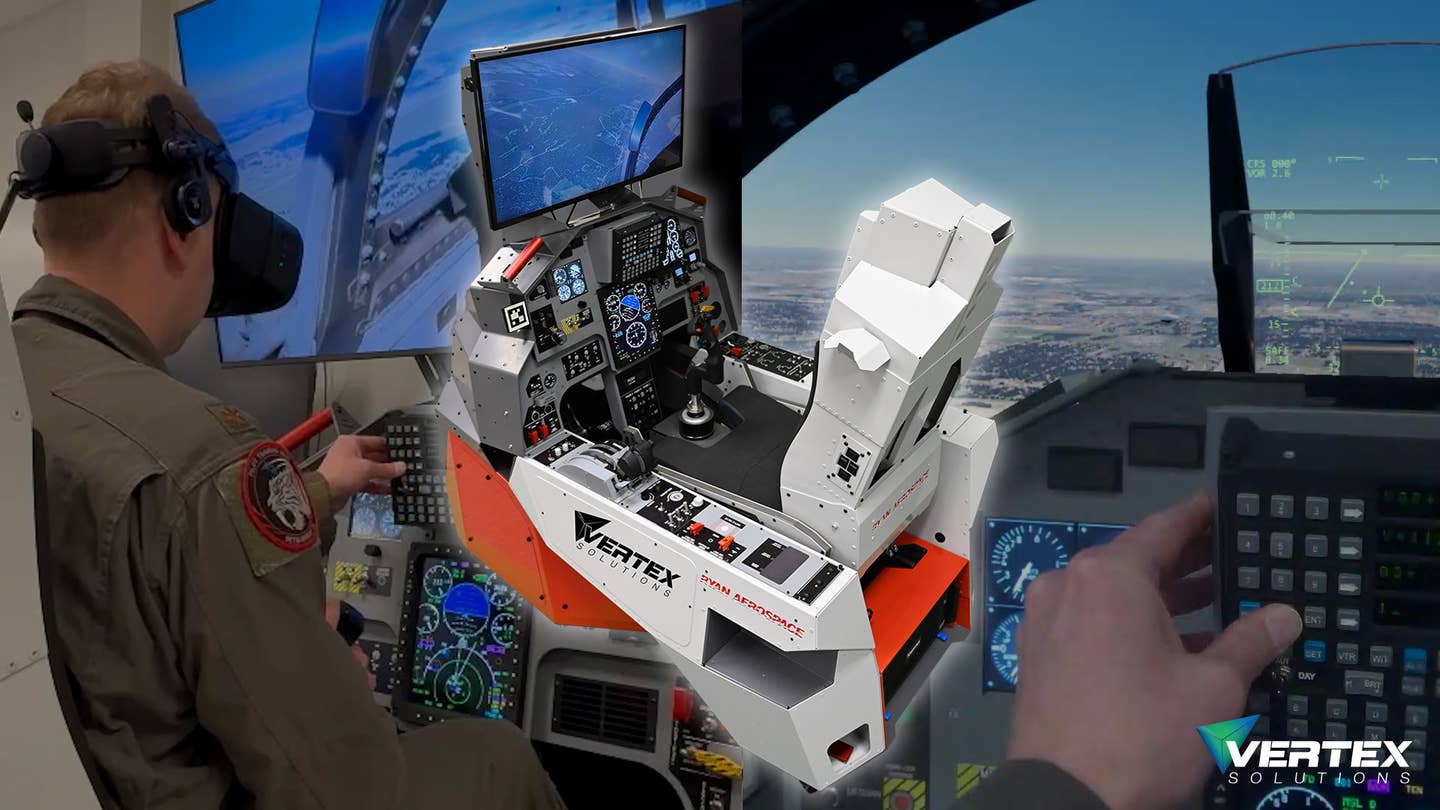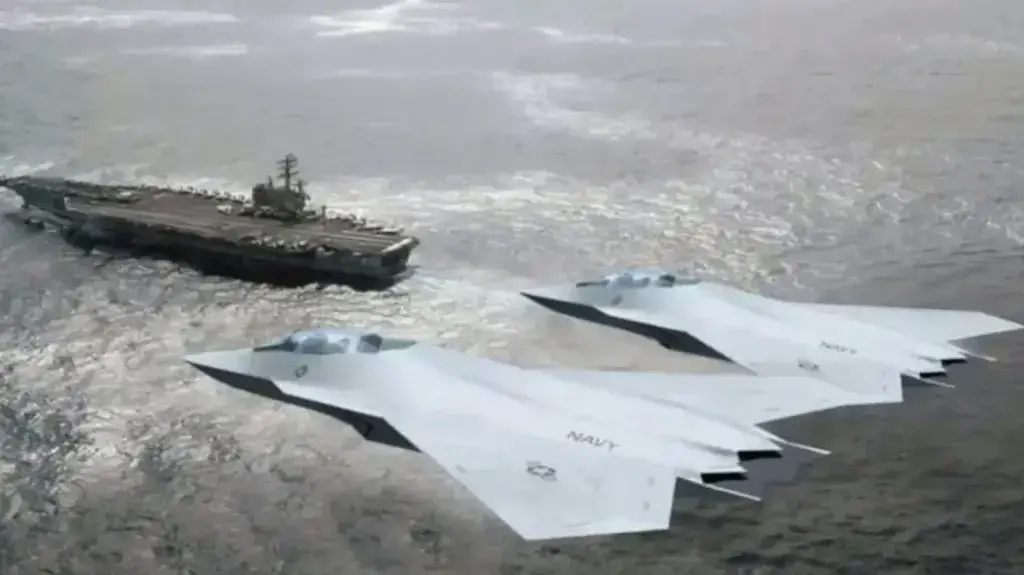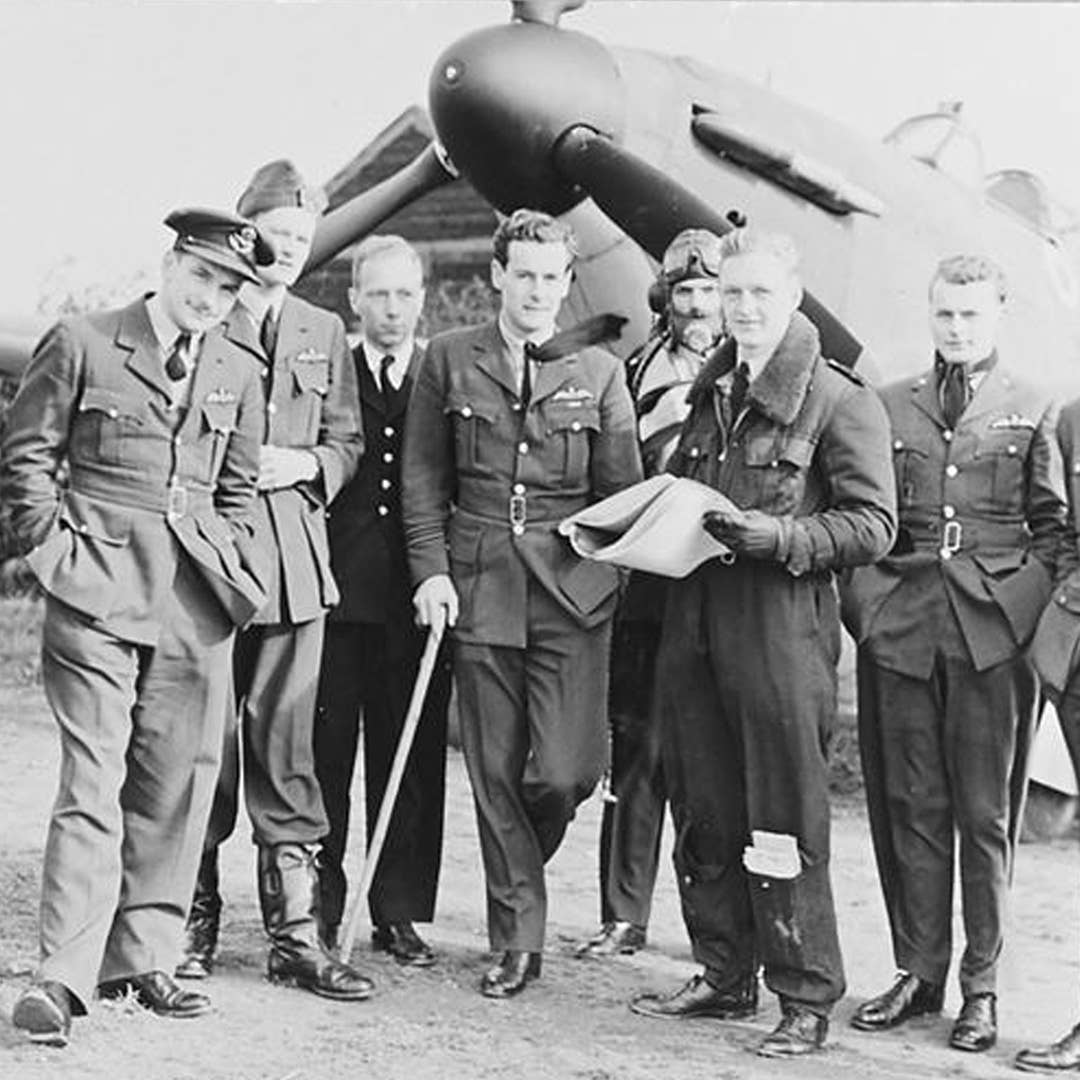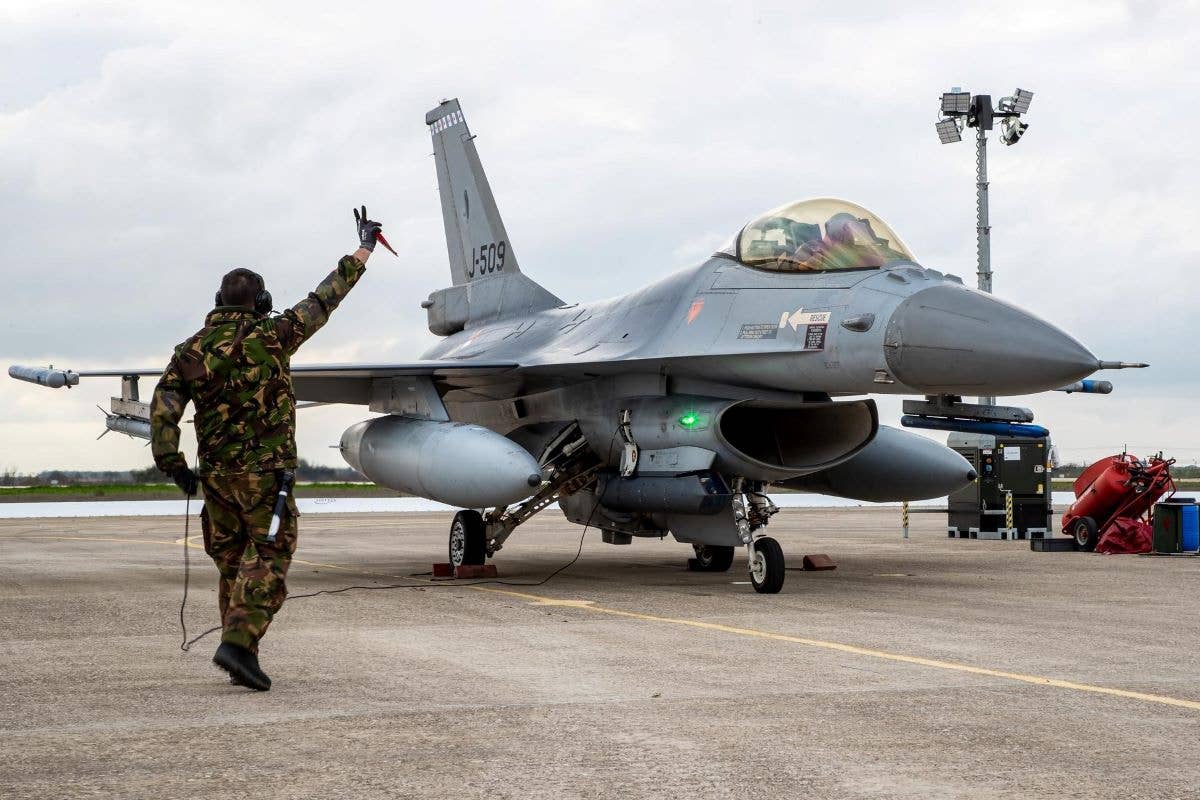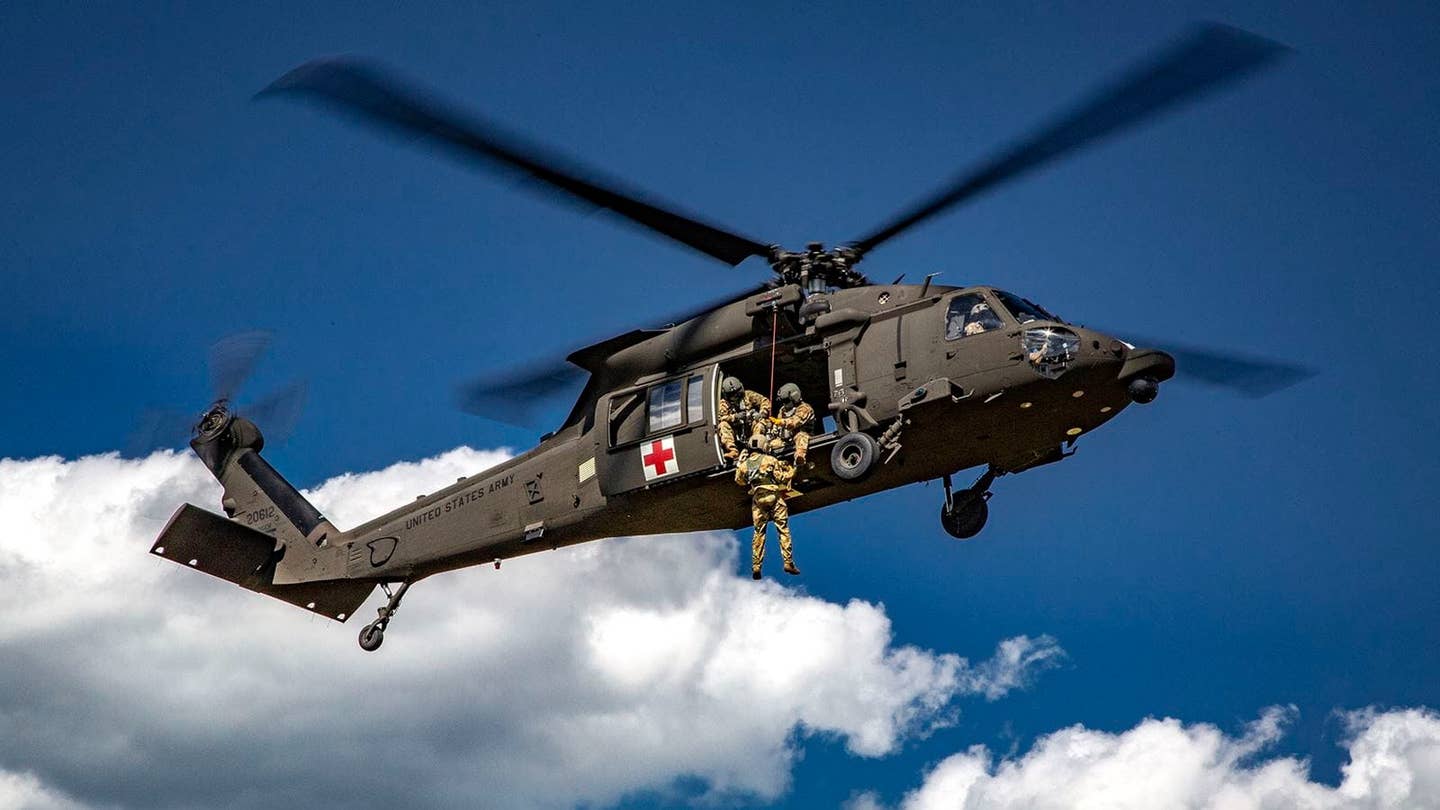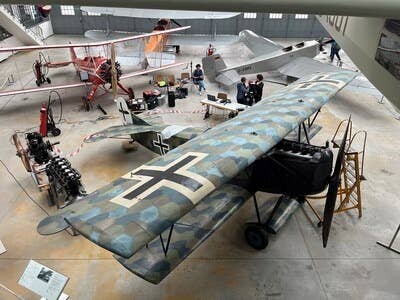Air Force Kicks Off ‘Hot Pitting’ Testing of Electric Alia
The test of the Beta Technologies electric aircraft examined battery usage and ground logistics.
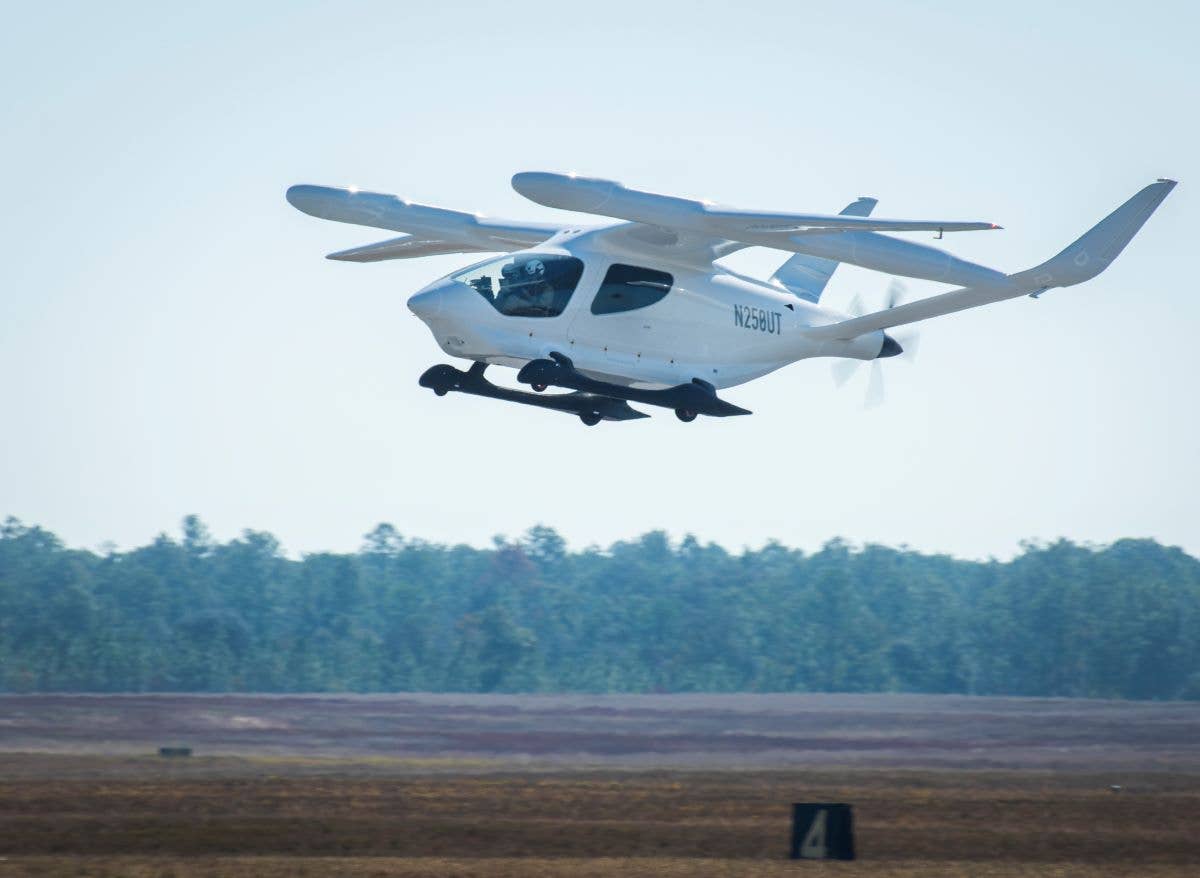
The Beta Technologies Alia aircraft lifts off from the runway November 7 at Eglin Air Force Base, Florida. The aircraft performed its first official test flight traveling to Tyndall Air Force Base and back recharging and then flying again. [Courtesy: U.S. Air Force]
The U.S. Air Force began its first round of testing of Beta Technologies’ electric aircraft Alia in Florida, the service announced this week.
The Alia arrived at Duke Field (KEGI), located about 10 miles north of Eglin Air Force Base, Florida, in late October, marking Beta Technologies' first delivery of an aircraft to a contracted partner.
During the first trial, which began November 7, Alia pilots flew 68 nm to Tyndall Air Force Base, Florida, where they landed before returning. When the aircraft arrived at Duke Field, it was then recharged for about an hour at a Level 3 recharging station—the first installed on a military installation, according to the service. After a maintenance check, the Alia then flew a second mission.
"This process is similar to the military flight operation hot pitting, where an aircraft flies a mission, lands for refueling, and then flies again. Only with Alia, the fuel is electricity," Eglin AFB said in a statement.
During the first round of testing, 782nd Test Squadron sensor operators also incorporated infrared (IR) recordings, during the aircraft's takeoffs and landings to collect heat signature data. The data is expected to be used to establish an IR baseline to calibrate sensors for another round of testing expected in December.
“We are trying to get an idea of what kind of IR signature this aircraft is putting out,” Josh Bohannon, 782nd Test Squadron senior electronics engineer, said in a statement. “We want to compare electric aircraft IR signatures to conventional fuel aircraft signatures. Infrared engine signature is a metric that helps determine survivability of an aircraft, and this is our first look at an electric aircraft engine in flight.”
All data collected during the experimental flight testing, including battery usage and logistics findings, will be recorded for the electric vertical takeoff and landing (eVTOL) program underway by AFWERX, the Air Force's innovation arm.
“Part of the testing process was to install an aircraft charger on a military installation to capture lessons learned and hopefully inform and accelerate future projects at different bases,” Major Riley Livermore, 413th Flight Test Squadron flight commander, said last month. “The fixed charging station will also help us write procedures and safety requirements for the Air Force. They’re currently not defined because the technology is new.”

Sign-up for newsletters & special offers!
Get the latest FLYING stories & special offers delivered directly to your inbox

